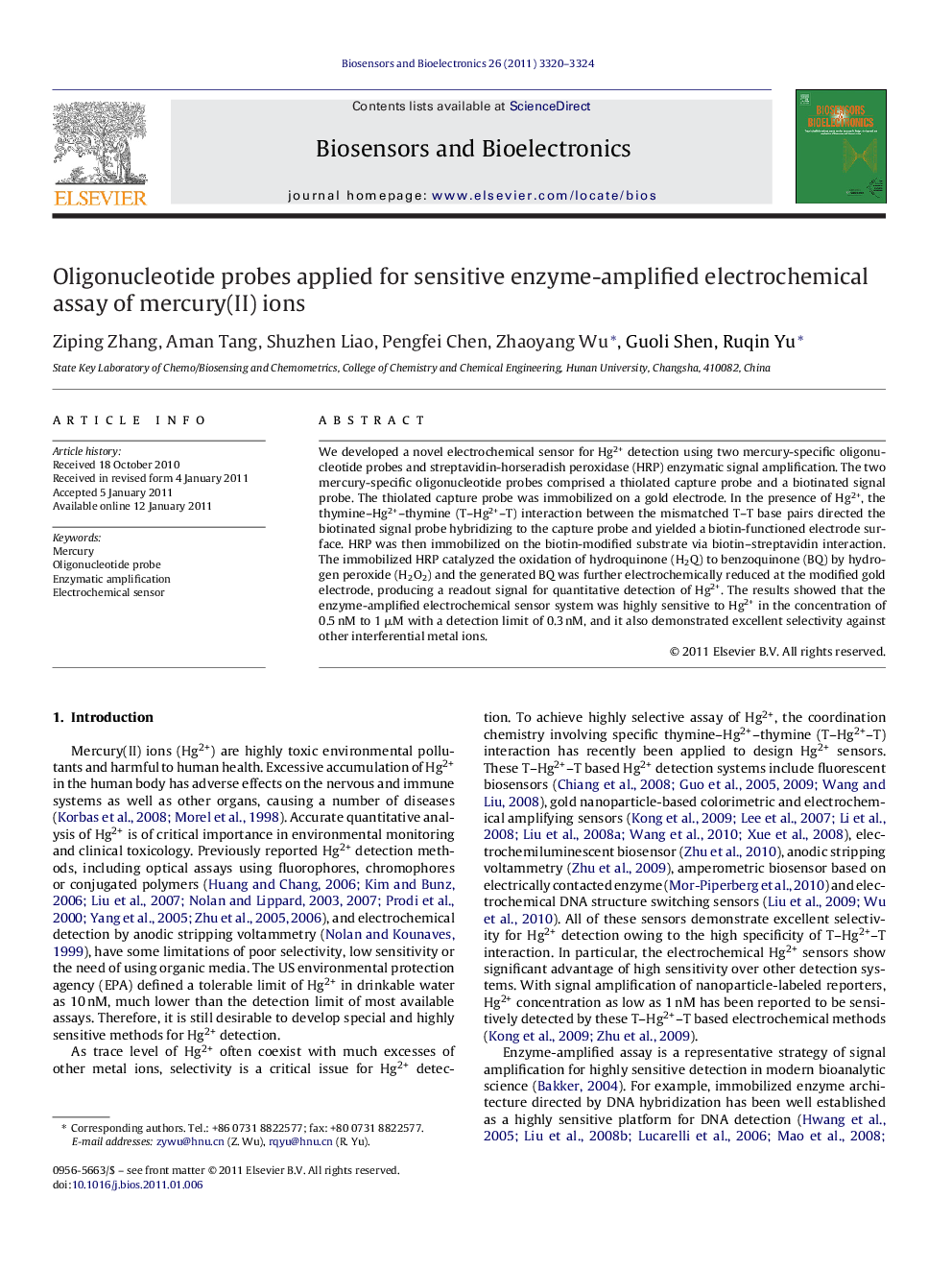| Article ID | Journal | Published Year | Pages | File Type |
|---|---|---|---|---|
| 868518 | Biosensors and Bioelectronics | 2011 | 5 Pages |
We developed a novel electrochemical sensor for Hg2+ detection using two mercury-specific oligonucleotide probes and streptavidin-horseradish peroxidase (HRP) enzymatic signal amplification. The two mercury-specific oligonucleotide probes comprised a thiolated capture probe and a biotinated signal probe. The thiolated capture probe was immobilized on a gold electrode. In the presence of Hg2+, the thymine–Hg2+–thymine (T–Hg2+–T) interaction between the mismatched T–T base pairs directed the biotinated signal probe hybridizing to the capture probe and yielded a biotin-functioned electrode surface. HRP was then immobilized on the biotin-modified substrate via biotin–streptavidin interaction. The immobilized HRP catalyzed the oxidation of hydroquinone (H2Q) to benzoquinone (BQ) by hydrogen peroxide (H2O2) and the generated BQ was further electrochemically reduced at the modified gold electrode, producing a readout signal for quantitative detection of Hg2+. The results showed that the enzyme-amplified electrochemical sensor system was highly sensitive to Hg2+ in the concentration of 0.5 nM to 1 μM with a detection limit of 0.3 nM, and it also demonstrated excellent selectivity against other interferential metal ions.
